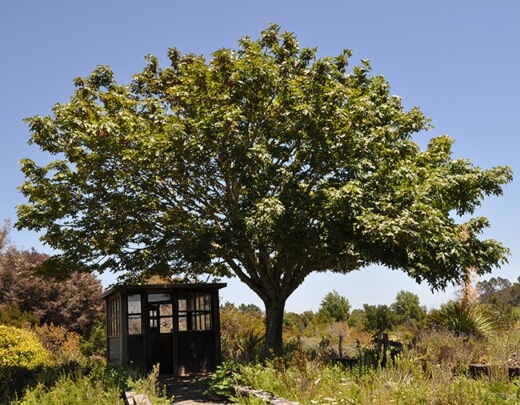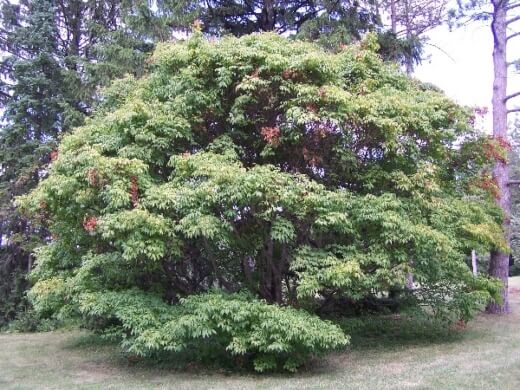The Maple tree and its gorgeous display of leaf colour brings to mind all things autumn. These incredible trees and their numerous varieties are native to many parts of the world, each with a unique colour palette.
In our growing guide, we’ll introduce the maple tree, cover some of the more common varieties, go through the growth, care and propagation of a maple tree, pests and diseases you might encounter, and lastly, chat through some frequently asked questions.
More...
Genus: | Acer |
|---|---|
Family: | Sapindaceae |
Plant type: | Tree/shrub |
Height: | 5 to 24 metres |
Sun: | Full to partial sun, partial shade |
Soil type: | Moist, well-drained |
Soil pH: | Acidic to neutral |
Maintenance level: | Medium |
Poisonous to pets: | No |
Introducing the Maple Tree
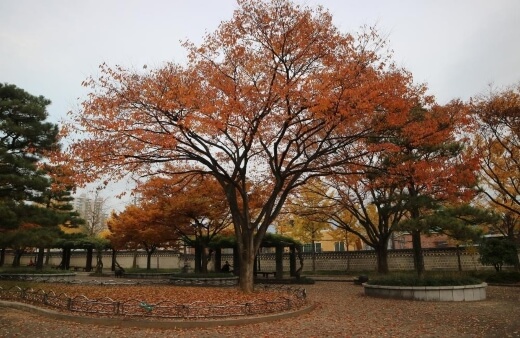
Maple trees are known for their autumn colours, which is usually a gorgeous palette of oranges, browns, yellows, and reds. Some of the tree varieties even have leaves with several of these colours at the same time.
The maple tree is also incredibly popular because it’s able to tolerate drought. Maple trees have a large number of species in the genus Acer, which is part of the plant family Aceraceae.
Most of the maple species are deciduous and range from multi-stemmed shrubs to large tall trees. Maple trees have shallow roots that can push up sidewalks and other paving if planted too close.
Many of the varieties develop thick exposed roots and these types are better in a woodland or where the ground around them can be covered with mulch or a ground cover.
Most maples love moisture so their roots can get into water pipes or sewer lines if they are planted above them. It’s a good idea to check the behaviour of the maple species you’re thinking about before you start planting.
Varieties of Maple Trees
There are about 125 maple tree varieties, and each one has different qualities and planting needs. The size of the tree varies by species, but they can grow anywhere from 5 to 24 metres in height.
Some of the most common varieties include:
- Red maple trees have red flowers in the spring, red fruit in summer, scarlet leaves in autumn and crimson bark and twigs in winter. They do well in wet soil, and are also sometimes called swamp maples.
- Sugar maples show off shades of yellow, orange, and bright red in autumn. They have a grey bark and a sensitive root system. Their sap is also used to make maple syrup.
- Japanese maples are ornamentals and remain smaller in size. They’re known for their interesting branching structure and bright colour.
Here are some of the maple tree species that you might find:
Amur Maple (Acer ginnala)
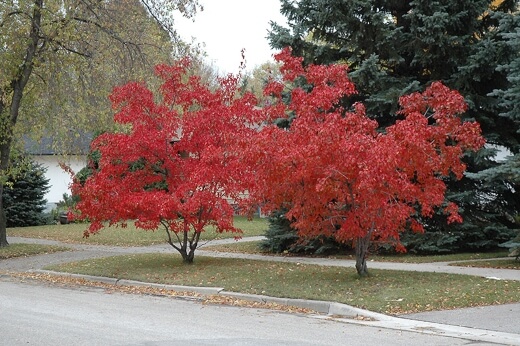
Source: plants.oaklandnursery.com
The Amur maple is one of the smaller trees in the Acer genus and is sometimes called Siberian maple. The autumn leaf colour is red, with yellows sometimes appearing.
The 'Embers' and 'Flame' varieties are particularly spectacular. Once established, the Amur maple also has some drought resistance.
Big Leaf Maple (Acer macrophyllum)
This maple tree has the biggest leaves of any maple and other common names for this tree include broadleaf maple and Oregon maple. Big leaf maple is a giant, thick-bodied tree with grey or reddish-brown bark.
Spring leaves are burgundy, then green in summer, and then yellow-orange in autumn. This large maple tree is great for creating shade.
Hedge Maple (Acer campestre)
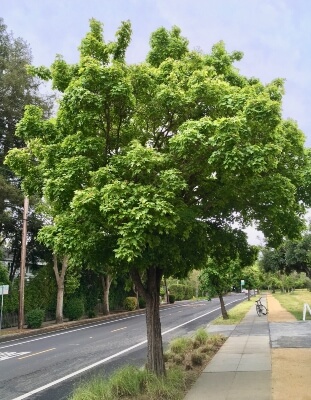
Source: trees.stanford.edu
The hedge maple is ideal for the urban garden. It does well in difficult conditions and can handle drought, acidic, alkaline, or salty soils, shady locations, and climates with ozone deficiency.
This maple tree is also known as field maple or common maple, and as a small- to medium-sized tree, it can provide shade in smaller landscapes or you can prune it as a hedge plant in larger landscapes.
The medium-green leaves become yellow in autumn. The Hedge Maple is native to Europe and southwestern Asia.
Hornbeam Maple (Acer carpinifolium)
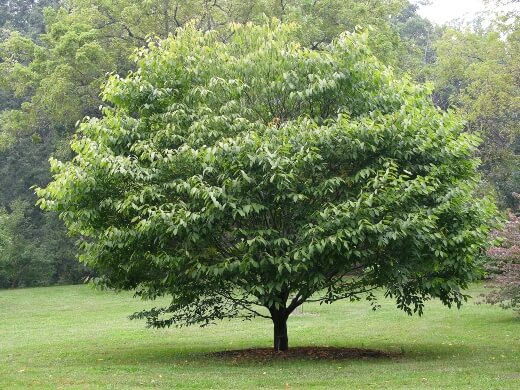
Source: en.wikipedia.org
This maple tree’s leaves are not what you expect from a maple tree. The leaves actually look more like the hornbeam tree (Carpinus spp.). The green leaves turn yellow or brownish-gold in autumn.
They are difficult to find for sale, but make for a great small tree or shrub. The Hornbeam Maple is native to Japan.
Japanese Maple (Acer palmatum)

The Japanese maple is a common sight in many Japanese gardens, and in the world of bonsai. The leaves are either green or red and come in a wide variety of shapes and textures.
The autumn colours vary depending on the cultivar and appear in shades of yellows, red-purples, and bronze hues. Dwarf varieties are often used as ornamental shrubs.
The plant is sensitive to both heat and cold. Japanese Maple is native to China, Korea, and Japan.
Complete guide: Japanese Maple – How to Grow & Care in Australia
Norway Maple (Acer platanoides)
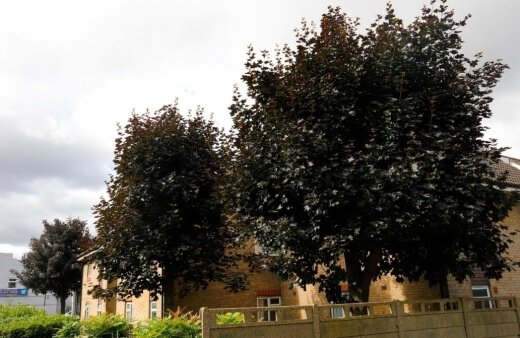
Also known as European maple, this popular maple tree species was brought to North America from Europe in the 18th century. The tree is a medium-sized shade tree and is shallow-rooted.
In some settings this species can become invasive. Crimson King is one of the most popular varieties, with very attractive maroon leaves throughout the growing season. This maple tree is native to Europe and western Asia.
Paperbark Maple (Acer griseum)

The Paperbark Maple tree has cinnamon or reddish-brown bark that peels away from the trunk. It’s a small round tree with narrow upright branches with leaves turning dramatic shades of orange or red in autumn.
The Paperbark Maple can really be appreciated in small landscapes and the interesting bark means the tree looks good all year round. The tree is native to central China.
Red Maple (Acer rubrum)

The Red Maple produces red spring buds that turn into red seed structures hanging from reddish twigs. This is a medium-sized maple that is a common landscape tree in North America, and is generally round or oval-shaped.
The autumn colours depend on the variety but range from greenish-yellow to red to burgundy. The Red Maple tree has many common names including scarlet maple, soft maple, swamp maple and water maple. It is native to the Eastern U.S. and Canada.
Silver Maple (Acer saccharinum)

Source: lakeforest.edu
The underneath of this maple tree's leaves are silver and look quite flashy when the wind blows. The Silver Maple naturalises very easily and grows very quickly. Seedlings can quickly sprout up and take over a landscape.
In autumn, the Silver Maple tree turns shades of yellow, orange, or red. This is also a shallow-rooted tree that should be kept away from areas with pipes or paving.
Sugar Maple (Acer saccharum)
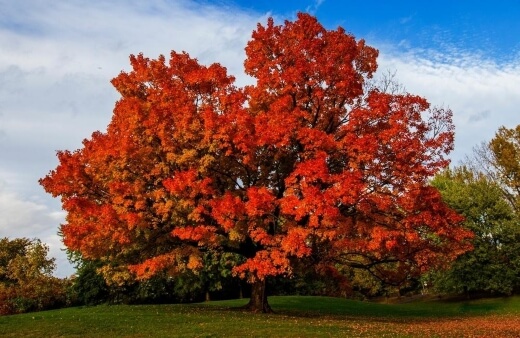
This maple tree is your go-to if you want to make maple syrup. The sap contains more plant sugars than any other maple species. This tree isn’t really made for urban conditions as it doesn’t like compact soils, road salts, or pollution. It does however handle shade really well.
The Sugar Maple is a large tree with leaves that turn yellow-orange in autumn. This species is often known as the rock maple or hard maple, being native to northeastern and southern U.S. and northeastern Canada.
Sycamore Maple (Acer pseudoplatanus)

This maple tree has leaves that are similar to the sycamore (Platanus). It does well with urban areas and can handle salt and pollution. In some areas, this tree is known as the planetree maple.
The Sycamore Maple is one of the bigger maples but is not a popular landscape tree because it doesn’t have much autumn colour. The Sycamore Maple can make a good shade tree and handles salty conditions well. The tree is native to Europe and western Asia.
Tatarian Maple (Acer tataricum)
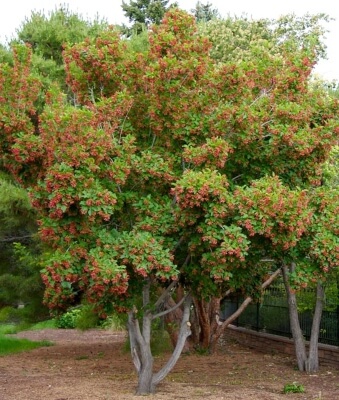
Source: hammarlundnursery.com
This species of maple tree is closely related to the Amur maple. It’s usually grown as a small tree but can also be grown as a shrub if left unpruned.
Greenish-white flowers appear in spring, followed by red samaras, and then the autumn leaves are yellow or red. This maple is native to central/southeastern Europe and Asia.
Vine Leaf Maple (Acer cissifolium)
This maple tree has leaves with three parts, a structure known as trifoliate. The leaves more closely resemble the leaves of ivies or ash trees (another common name for this plant is ivy-leaved maple).
In shape and size, this small tree looks similar to the Japanese maple and autumn colours range from ordinary green to shades of yellow and red. The tree is native to Japan.
How to Grow Maple Tree

Sun Requirements
Maple trees like full to partial sun or partial shade. Full sun means the tree needs a minimum of six hours of sunlight a day but can also cope with 8 to 10 hours of sun.
What Soil to Use
Maple trees prefer an acidic to neutral soil ranging from 5.0 to 7.0 in terms of pH scale. Maple trees grow best in soil that is moist, deep and well-drained and the texture should be fine to medium.
You want to avoid dry, sandy or rocky soil. If you maintain good soil health this will be key to growing big and strong maple trees. Avoid the use of raw manure around your maple tree.
Fertilising Maple Tree
Older and well-established maple trees don’t usually need fertilising. They have an expansive root system which can access nutrients through the soil and from rainfall.
Younger trees will benefit from fertilisation to help them establish a good root system. A good time to fertilise is in early spring after new leaves have just started to show.
To conserve moisture during the growing season and to control weed growth, you can apply a layer of cured, shredded or chipped wood mulch or pine straw around the tree in spring. When the mulch decomposes it adds vital nutrients to the soil.
Don’t use freshly chipped wood for mulch – it should cure in a pile for at least 6 months, and avoid piling mulch directly against the base of your tree which can cause it to rot.
Check out our guide on when and how to use different types of mulch for your garden. When fertilising your maple tree, use a slow-release shrub and tree fertiliser or a mild, organic plant food. Don’t use 10-10-10 and other quick-release fertilisers.
Maple Tree Care Tips

Watering Schedule
Once you’ve planted a new maple tree in the ground, especially during the summer months, you can be tempted to water every day in order to grow roots. In average garden soil, you shouldn’t have to water your tree every day. This usually causes soggy soil that can lead to root rot on some maple varieties.
If there isn’t sufficient rainfall, water when needed to keep the root ball and surrounding soil damp to moist. Deep soaking less often is much better than splashing just a little water on the tree every day.
Deep watering promotes deep root growth and can reduce water loss by evaporation. If you notice the leaves of your maple tree are browning on the tips or starting to wilt, this can mean that your soil is either too dry or too wet.
Before watering, check the soil moisture using your finger. If the soil is moist you can wait to water it. Once your maple tree is well-established in about two years, it won’t need as much care in terms of soil moisture and watering.
However if there isn’t sufficient rain, especially during the warm season when plants are actively growing, your maple tree might need a top up of water.
During a drought, wilting leaves are a sign of a thirsty tree. Maple trees planted during the cooler winter months also don’t need much watering. Only water if necessary to keep the soil damp.
If a self-watering pot sounds like something you could get on board with, have a look at our Australian buying guide for the 10 best self-watering pots available online.
How to Prune Maple Tree
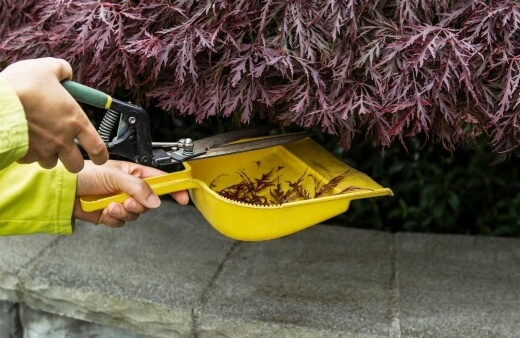
Maple trees tend to bleed or lose a lot of sap when cut, which often scares people when it comes to pruning. A maple tree can actually grow absolutely fine without ever being pruned. With young trees though, it can help to create a denser and more attractive tree with better shade.
Maple trees can be pruned in late winter or early spring, but this can cause excessive bleeding. The sap loss doesn’t harm older, established trees but can damage young ones.
Any major pruning is best during summer, once all the leaf buds have already opened. Damaged or dead branches or stems can be removed when you see them. Just be sure to make your cut beyond the dead part.
There are a few reasons to prune a maple tree. Light pruning is for shaping purposes and heavier pruning improves branch structure. If you’re going the light pruning route, this is best with younger trees, before their branches grow too large.
Simply remove lower branches growing from the trunk to your chosen height. Before removing a branch, first check where it goes. Depending on the size of a branch, use hand pruners or a tree saw to remove branches.
Make cuts just beyond a leaf or leaf bud on the stem. Stems on low hanging branches can be removed at any time of year. To help you with this task, see our product review and buying guide on the best garden loppers and electric pole saws for 2024.
Maple Tree Propagation
The maple tree can be propagated from a stem cutting to grow a new tree.
Here are the steps to follow:
Take a maple tree cutting from the tree, about 25cm in length, and remove all leaves except for those at the very top. It’s best to take cuttings in late spring or early summer when the branches are new and green. Old, woody and hard cuttings are more difficult to propagate.
Prep a planting container – a small container or pot is perfect in the beginning so it can be kept indoors and close to a window. Mix moist seed soil with Perlite at a one-to-one ratio and fill the pot.
Dip the freshly cut end of the maple tree cutting into a rooting hormone. Organic homemade rooting hormones include a tea made from willow cuttings or honey.
To make willow tea, put one cup of willow twigs in 2 litres of boiling water and let it stand overnight. Dip the cut end of the cutting into the willow tea and let soak for about one minute.
Place the dipped cutting directly into the centre of the pot. Push the cutting 2.5 to 5cm deep into the soil, depending on the pot size. Keep the pot warm.
Rooting tree cuttings need conditions similar to seed germination, so keep it indoors near a window that gets enough sunlight. Keep the pot moist but not soaked. All being well, the cutting will establish roots in about eight to ten weeks.
Transfer the plant to a larger pot with prepared soil. You can help your plant adjust to cooler temperatures by placing the pot outside during the day and bring it indoors at night.
Do this for about ten days before transplanting the growing tree to a permanent place. Plant directly into ground soil, choosing a location with sufficient sunlight. Cover the ground around the trunk with both fertiliser and mulch to keep it warm.
Maple Tree Pests and Diseases

Some of the common pests and diseases that affect the maple tree are:
- Root rot
- Gall mites
- Cankerworms
- Aphids
- Cottony scale
- Petiole borers
- Leafhoppers
- Boxelder bugs
Some are more damaging than others but those to look out for include:
Verticillium Wilt
Also called maple wilt, this fungus is common and can kill trees. The infection starts in the root system and works its way up the maple tree, causing cankers and dieback. Signs of maple wilt are scorched-looking leaves and unhealthy branches and leaves.
Anthracnose
This disease causes severe leaf loss, dieback of new shoots, and the twigs die. Signs of anthracnose are brown areas on the leaves. You’ll also notice canker on the trunk and bigger branches, and purple-brown areas on the veins of the leaves.
Tar Spot
This disease affects quite a few maple tree species and causes large, tar-like spots on the leaves. It’s a fungal disease, so a good habit is to rake up any dead leaves around the tree.
Asian Longhorned Beetle
This insect damages the sapwood underneath the bark layer and this stops the tree from transporting nutrients and water that it needs. Once a tree has an Asian longhorned beetle infestation, it usually dies within 1 to 2 years.
Maple Tree Frequently Asked Questions
What is the cultural significance of the maple tree?
A maple leaf is found on the coat of arms of Canada, and on the Canadian flag. The maple is a symbol of strength and endurance and has been chosen as the national tree of Canada.
Maple leaves are traditionally an important part of Canadian Forces military regalia, as the military rank insignia for generals use maple leaf symbols. There are 10 species naturally growing in the country.
What are the uses of the maple tree?
Maple trees are popular for producing bonsai trees, but also to make syrup and wood. Dried wood is often used for the smoking of food, and charcoal from maples is an important part of the process used to make Tennessee whiskey.
They are cultivated as ornamental plants and have benefits for tourism and agriculture. Maple trees provide timber, tonewood for musical instruments, and pulpwood for paper.
Are maple trees toxic to humans and pets?
Red maple trees are toxic to horses but nontoxic to dogs, cats and humans.
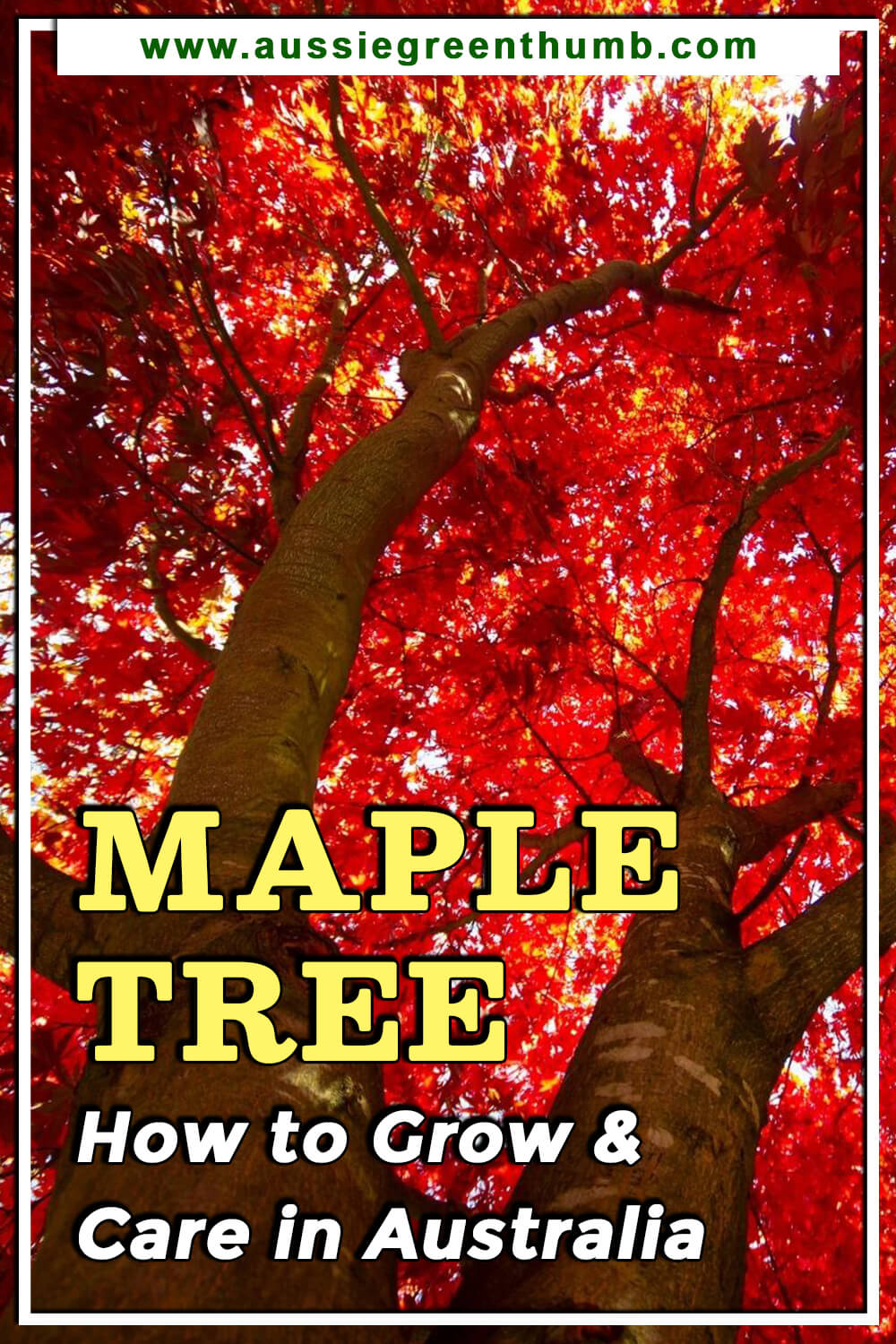
Wrapping Up Our Maple Tree Guide
Red, sugar or Japanese? Whichever kind of maple tree inspires you, you’ll be growing a tree that is not only beautiful, but could also provide you with a great sugar fix!
The Canadians must have known something about its value and appeal when they decided to make it their national tree and put the maple leaf on their flag. Ornamental, water loving, and autumn inspired are just some of the ways we would describe this charming tree.
You can propagate easily from cuttings, you only need to prune your tree if you want to maintain the shape, and it makes a great bonsai if you’re feeling like you want to go that route. We’re giving the maple tree our green thumbs up!
Published on June 17, 2022 by Maisie Blevins
Last Updated on February 7, 2024

